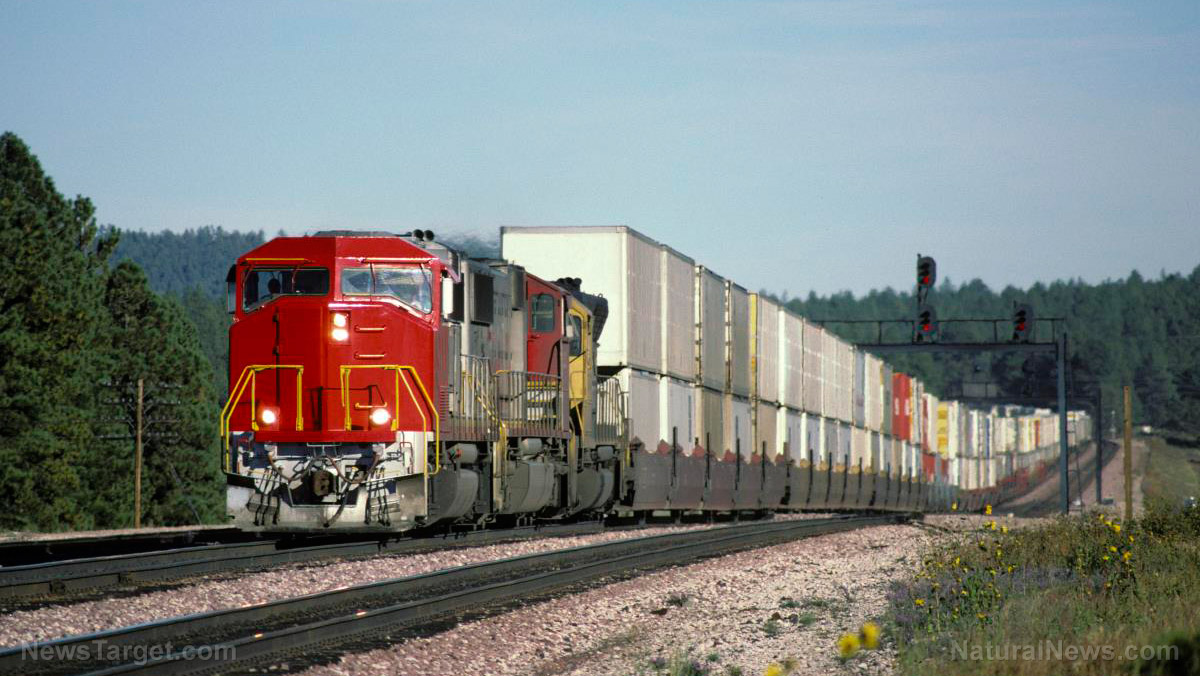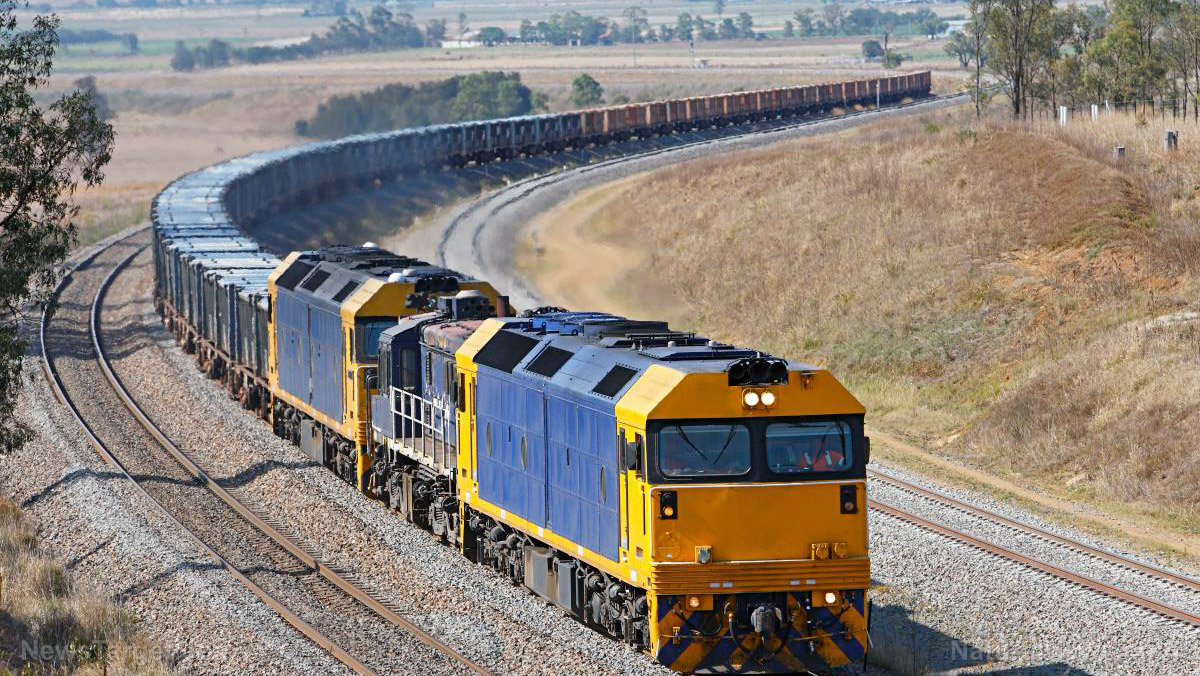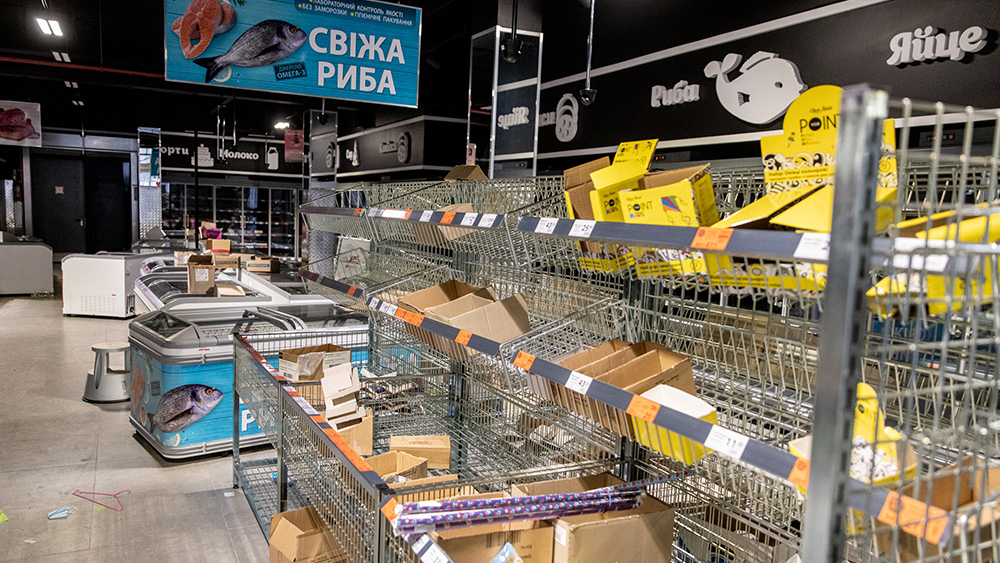Georgia’s solution to port congestion? Move shipping containers inland
11/17/2021 / By Arsenio Toledo

Georgia’s solution to the massive accumulation of shipping containers in the state’s ports is to set up temporary overflow yards inland. These impromptu container storage areas keep the flow of imports and exports at the ports moving smoothly.
On Friday, Nov. 12, the Georgia Ports Authority (GPA), the primary owner and operator of the state’s ports, announced that it was setting up temporary storage areas for shipping containers. Dubbed as the “South Atlantic Supply Chain Relief Program,” it will provide the state with 500,000 twenty-foot equivalent units (TEU) of supplemental capacity. (Related: Gulf Coast ports see growth in September despite ongoing supply chain crisis.)
The first off-dock spillover yard opened on Wednesday, Nov. 17, at the Norfolk Southern railroad’s Dillard Yard. This yard, which is less than five miles away from the port, has room for 43,200 TEUs.
The next overflow yard will be at the Statesboro-Bulloch County Airport, which is less than 50 miles to the northwest of the port. The GPA was able to reach an understanding with the Federal Aviation Administration to allow the port authority to use an unused runway strip, which can hold around 900 shipping containers.
“We think this will make a huge difference for both importers and exporters as we clear out our yard,” said GPA Executive Director Griff Lynch in a statement.
In addition to the temporary overflow yards already established, the state has also reached agreements to open up several more spillover yards, including some in North Carolina.
Georgia authorities plan to move containers by rail
The shipping containers will be shuttled to the temporary overflow yards either by truck or by rail. The state will start shuttling containers by rail to the Husley Yard in Atlanta in December. The yard can store up to 104,000 TEUs.
To help the state transport shipping containers to Atlanta, Republican Gov. Brian Kemp recently announced the completion of a new rail system. The South Atlantic Supply Chain Relief Program and the new rail system “are important to resolve the supply chain issues for Georgia and the nation,” said Kemp.
The rail system will help connect Port of Savannah’s nine new rail tracks to the rest of the state’s rail network. Kemp said it “is coming online at the perfect time to help address the influx of cargo crossing the docks at the Port of Savannah.”
The new rail tracks allow the port to operate as many as six, 10,000-foot trains at any given time. Each train, which measures nearly two miles in length at full capacity, can carry around 350 shipping containers.
State and port authority officials invested in the new rail tracks years ago for $230 million after foreseeing that the country’s severe truck driver shortage would only get worse.
The GPA’s reputation for investing in productivity enhancements well before demand increases has allowed the state’s ports to remain relatively free of the crushing congestion seen in other ports, notably in California.
In his speech announcing the completion of the new rail system, Kemp pointed out that the Port of Los Angeles and Long Beach have more than 100 ships waiting to dock.
The state has been rewarded well for this foresight. Last month, the GPA recorded 80,000 shipping containers sitting at the terminal of the Port of Savannah. This is around 50 percent more than the average number of containers at the port, according to Lynch.
While that number has not changed much, the GPA has seen a massive 60 percent reduction in the amount of time shipping containers remain on the terminal. Last month, for the first time in the GPA’s history, the authority handled more than 500,000 TEUs in a single month. The Port of Savannah processed 504,350 TEUs, an 8.7 percent increase over the same month last year.
Furthermore, the Port of Savannah has seen a 40 percent reduction in the number of ships at anchor in the past month. Last month, 30 ships were waiting in the Atlantic Ocean to dock at the port. Last week that number went down to 23. On Monday, Nov. 15, the number dropped to 18.
“I think once we see that come down to 10 and into single digits, you’ll see us really pick up the speed as well,” said Lynch.
In terms of the movement of truckers, the Port of Savannah’s speed compares favorably to pre-pandemic levels. Turn times are 41 minutes for a single move and around an hour when dropping an empty container and picking up an import load.
Lynch pointed out that this productivity would not have been possible without the combined effort of state authorities, the GPA and the port workers, who have been working around the clock.
“The last six months have been very challenging. We’ve all been working, shoulder-to-shoulder, day and night,” said Joel Wooten, GPA chairman of the board. “This is the relief we needed in order to regain terminal efficiency and speed up vessel service.”
The state also has a long way to go before fully resolving the heavy congestion at the port. The Port of Savannah still has 23,000 more containers on the docks than its maximum capacity.
The average import dwell time for containers is still over eight days, double the goal of four days. Exports also still have to wait nearly eight days before being loaded onto a cargo vessel, while empty containers are still sitting 16.5 days against a target of 10 days.
Bubble.news has the latest news about the congestion at America’s ports, and the difference between how blue states like California and red states like Georgia handle the crisis.
Sources include:
Submit a correction >>
Tagged Under:
big government, Brian Kemp, bubble, cargo containers, chaos, Georgia, port congestion, Port of Savannah, products, rail transport, shipping containers, supply chain, supply chain crisis, transportation
This article may contain statements that reflect the opinion of the author
RECENT NEWS & ARTICLES
SupplyChainWarning.com is a fact-based public education website published by SupplyChainWarning.com Features, LLC.
All content copyright © 2021 by SupplyChainWarning.com Features, LLC.
Contact Us with Tips or Corrections
All trademarks, registered trademarks and servicemarks mentioned on this site are the property of their respective owners.





















